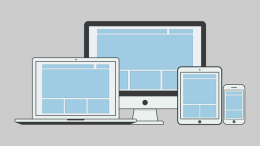Guest author Tom Slowe is CEO and cofounder of Nervve, a provider of visual search technology that aims to change the way video and imagery is used for intelligence, insight and action.
In 2015, we’ve reached a point where the ability to fulfill our every want and need is right at our fingertips. And yet, we are constantly being inconvenienced—and potentially harmed—because of antiquated procedures that still clog some of the most important and basic aspects of our lives.
Some of biggest examples of this are seen on our roads, bridges and the waters we access every day. For a country once known as an innovator of the world’s most modern transportation, with millions invested in infrastructure, we have fallen far from our pedestal. In fact, the World Economic Forum’s Global Competitiveness Report for 2012-2013 spotlighted the issue, stating that U.S. infrastructure ranks behind that of most advanced countries and even some developing nations.
The impact is clear: How many of us have been inconvenienced by one of the 240,000 water main breaks that occur yearly or spend hundreds of hours a year in traffic? When WhatsApp is acquired for $19 billion and Snapchat is valued at $16 billion, we have to ask ourselves if we are really investing in and using today’s technological advancements in the best way. Or, can we significantly improve how we apply it to new areas that affect people on a broad scale every day?
To Start, We Need A Better Way To Monitor
Surveillance video to monitor is a technology that is constantly debated. While many think of Big Brother and the NSA, the technology behind surveillance video provides us with a wealth of other benefits that we already experience—including traffic lights, where sensor technology helps to better time light changes based on when cars appear at an intersection.
But, surveillance services shouldn’t just stop at traffic lights and security monitoring. Leveraging advanced monitoring services, infrastructure engineers could put cameras at critical points on a bridge to continuously monitor for signs of weakness or overstressing. Advanced video and image search tools rely on deep learning techniques that could identify these warning signs and immediately alert the engineering team, should a bridge be in danger of collapsing, long before it occurs.
How To Be Remote And Hands-On At The Same Time
Virtual reality is one of today’s most talked about trends. The opportunity to escape to new worlds through games and other fantastical immersive content can be the ultimate source of entertainment, exploration and learning.
VR allows users visit locations around the world without leaving home, explore the intricacies of a vehicle or examine architectural design without building a physical model. Availability on mobile devices now makes the barrier to adoption virtually nonexistent. New tools such as eye-tracking and “hotspot” features will also shift how we choose to communicate and engage in everyday interactions by offering more depth and detail.
Yet, we’re missing the boat if we only focus on VR’s application for gaming, travel and learning. When it comes to examining infrastructure to assess durability and the need for reconstruction, surveyors can spend countless hours physically visiting each required site.
This is where VR can help local governments maximize their efficiency. By installing a 360-degree or advanced VR camera, users can automate a weekly recording of a particular piece of roadway and then view that content from their mobile phone using Google Cardboard. With this technology, they can regularly examine each area’s deterioration, without having to spend an unnecessary amount of hours traveling. To the residents that cross that roadway every day, this technology would save hours spent in traffic.
Under Pressure
The Internet of Things (IoT) has become one of the most common adopted tech trends of the past year. Leveraging data collection and sensor technology in everything from a FitBit to a smart refrigerator, this technology lets us record the details of our daily interactions and interprets them, drawing conclusions about our needs.
With its ability to automatically sense changes in pressure and/or stress, IoT devices can be the giant red flag engineers seek for monitoring things, like a possible infrastructure crisis.
Imagine, for example, if every water main had an IoT sensor on it that measures the pressure applied to certain areas of the pipe. When an area of piping is functioning properly, the pressure should remain fairly consistent. However, if an area of the pipe was weakening and in danger of bursting, engineers could see an abrupt spike in pressure and send out a team. By using IoT technology to monitor for repairs, government can eliminate the negative consequences a break has on commuters and the residents that need running water.
With the evolution of technology, we engage and communicate in ways that couldn’t be imagined two decades ago. The benefits go beyond the purely economical. Yet, we’ve barely reached our potential as a society—largely because we’re not using the technology to its fullest.
As we continue to build on the way we capture data, construct experiences and develop a more connected culture, we must be sure these change are comprehensive across our society. This means considering how the implementation of new technologies can be expanded to drive lower costs and improve safety. While it is a big one, improving U.S. infrastructure is only our first step.
















